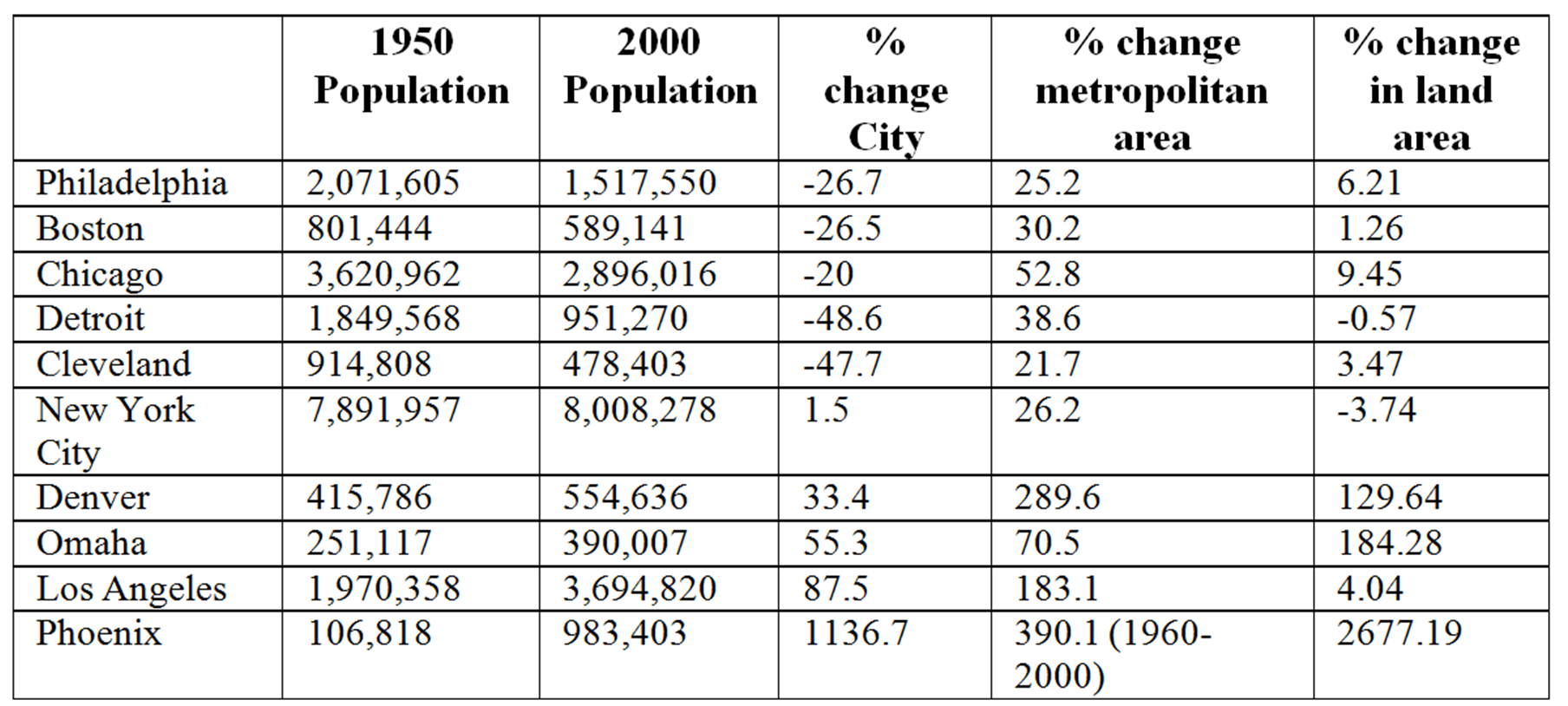 Urban decay, also known as urban rot or blight, is the process through which previously functioning cities, or communities within cities fall into disrepair and decrepitude. This may result from economic or social conditions. Deindustrialization, a flow out of population or a change in population make up, restructuring, high localized unemployment, fragmented families, crime, disenchantment and/or a sense of being disenfranchised, abandoned buildings, and/or lack of services or continued investment are some of the issues faced.
Urban decay, also known as urban rot or blight, is the process through which previously functioning cities, or communities within cities fall into disrepair and decrepitude. This may result from economic or social conditions. Deindustrialization, a flow out of population or a change in population make up, restructuring, high localized unemployment, fragmented families, crime, disenchantment and/or a sense of being disenfranchised, abandoned buildings, and/or lack of services or continued investment are some of the issues faced.
As decay spreads, the local area becomes vulnerable to crime, to physical and natural disasters, and creates a zone of increasing economic risk. The move out of the cities, to the suburbs or to commuter cities in the last half of the 20th Century accelerated the process, compromising the tax basis of communities within cities. Today, we are witnessing a reversal of the trend, as more and more people seek to live within their financial and resource means, seeking to rely on shared services, and optimized infrastructure. The baby boomers are aging, and it is not so easy for them to live in homes with stairs, in gardens, dependent on cars. It is far easier for them to enjoy more freedoms in apartment buildings with elevators, shared transportation, and easy access to stores, services and entertainment.
However, areas that have suffered decline - whether from high unemployment, poverty and/or a decaying physical environment – are often highly resistant to positive change. There is a focus on rebuilding specific parts of towns, and focused investment on amenities has been shown to work. These islands are slow to develop and to succeed, in part because of the residual pollution from past manufacturing and industrial activities, leaving numerous contaminated brownfields for cleanup; and, in part because of cut backs on services resulting from the falling tax base.
A well functioning urban economy is needed to help reverse urban decline; and this occurs at many levels. Housing stock is critical – as buildings decay, it is often less costly to abandon them and move to green fields, where new buildings can be erected less expensively, and can be built according to existing code. Rebuilding in an inner city, where the housing stock is older, may be contaminated, rarely meets code, and is built of heavier, older materials can be prohibitively costly. It is cheaper to abandon them, as they will not disappear by themselves.
Urban renewal policies have rarely been successful; many of the associated policies have caused additional harm. In some areas urban renewal is becoming its own industry, with a hit and miss success rate.
Data for changes in population for a few US cities between 1950 – 2000 shows how disparate the change is – reflecting in part the mobility of individuals, and the growth of cities in the South and West, as opposed to the decline in the more industrialized Northeast and Midwest. The numbers presented in the table below show the change for the city itself, as compared to the larger metropolitan area, and may reflect movement out of the cities, or additional annexation of land into the city boundaries. These numbers are indicators, and do not reflect a common rate or type of urban decline. They also reflect policies of decentralization supported by accessible transportation as represented by individual car ownership. In 1910 there were 0.5 million registered cars in the United States and in 1980 there were 131.6 million cars. Decentralization was also encouraged by a change in the cost of obtaining energy. Electricity became abundant and cheap.

Source can be found here
In Europe, there is a similar pattern of change, with suburbs attracting a large number of people at the expense of inner cities, or large cities attracting people away from less economically viable villages and smaller communities. It is estimated that every country has abandoned villages and towns. In Italy, entire villages are being put up for sale to investors – but there are an estimated 20,000 ghost towns that are totally or partially abandoned. The reasons are manifold and include harsh living conditions, such as lack of running water and electricity, natural calamities, emigration to large cities or to other countries. Spain has about 2,900 deserted villages, being sold for between $75,000 and $300,000.
CSRspace believes that positive, concerted and focused action is possible to reverse these trends to create economically vibrant, high quality of life and attractive communities in many of these locations. Doing so requires a sound mix of private and public investment, using a mix of smart, sustainable and scalable planning options to make them work. There is a move away from being reliant on imported energies, on resource wastage, and the aging populations of many countries expect a high quality of life as they live longer and in better health. There is an opportunity to make change happen that promotes economic growth while meeting the expectations of citizens.
